With each passing year, cyber threats evolve, becoming more sophisticated, more sly, and more damaging. This reality makes it imperative for businesses of all sizes and industries to prioritize their cybersecurity, keeping their business assets and sensitive data secure.
By understanding the landscape of cybersecurity in 2024, you can better equip your business against the myriad of cyber threats lurking in the digital shadows. Let’s arm ourselves with knowledge and tools, and explore practical ways to safeguard your business as we enter the new year.
Cybersecurity in 2024: A New Landscape of Threats
The cyber landscape in 2024 isn’t just a matter of concern for IT professionals; it’s a crucial business consideration. Cyber-attacks can lead to devastating financial losses, damage to reputation, and legal repercussions. According to IBM and the Ponemon Institute, the average cost of a data breach in the U.S. this year reached a record high of $4.45 million, a rise of 2.2% from 2022.
Phishing, ransomware, and malware continue to be the most common type of cyber-attack, but their methods have become more sophisticated. Cybercriminals are now leveraging artificial intelligence (AI) and machine learning (ML) to craft convincing, professional-looking phishing emails and to automate their attacks, making them more efficient and harder to detect.
Understanding the importance of cybersecurity is the first step in creating a safe digital environment for your business. This involves not only investing in the right technology and tools, but cultivating a cybersecurity-conscious culture within your organization with informed employees and a strong security strategy.
Constructing a Cybersecurity Framework
Establishing a solid cybersecurity foundation is a crucial first step, as it lays the groundwork for other, more targeted security solutions. Creating a cybersecurity framework starts with a comprehensive cybersecurity policy that clearly outlines your company’s guidelines and procedures for data protection and management. A well-crafted policy should cover aspects such as user access control, data handling protocols, and strong password protocols.
Key elements of a strong cybersecurity framework include:
Regularly evaluate your digital assets to identify potential vulnerabilities. This helps in prioritizing which areas need more robust protection.
Ensure that all systems are configured securely. Default settings often prioritize convenience over security and should be adjusted accordingly.
Implement strict controls on who can access what data. Use the principle of least privilege – employees should only have access to the information necessary for their job roles.
Employee Cyber Awareness Training
Your team will often be the first line of defense against cyber threats – particularly social engineering attacks like phishing. Regular training and awareness programs are essential to keep their knowledge and awareness sharp.
Creating a culture of cybersecurity awareness involves regular communication, and encouraging employees to speak up if they notice anything unusual. Conducting regular drills or simulations of cyber incidents is also an effective way to keep everyone alert and prepared.
Teach employees how to spot suspicious emails or messages that might be phishing attacks. Test this knowledge with simulated attacks.
Educate on safe browsing habits and the dangers of downloading unknown attachments or clicking on dubious links.
Provide clear guidelines on how to securely handle and share sensitive information.
Essential Cybersecurity Solutions
With the groundwork laid, you can start implementing certain security measures, tools, and solutions that are more targeted to your business’s needs. The following are some of the more basic, yet essential, cybersecurity tools that every business should have in use.
MFA adds an extra layer of security by requiring users to provide two or more verification factors to gain access to a resource or account.
The first aspect of network security, firewalls act as a barrier between your network and the internet, controlling incoming and outgoing traffic based on security rules.
These programs detect and contain suspicious activity that may be malicious, such as viruses, worms, and Trojans.
Cybercriminals often exploit vulnerabilities in outdated software. Regular updates and patches close these security gaps. Closely monitor your software vendors for patch releases, and apply them immediately.
This measure enables the management and control of user identities, and their level of access to resources.
Regularly backing up data ensures business continuity in the event of a cyber incident or natural disaster.
Advanced Security Solutions
This is where your defenses get more intelligent, incorporating modern features like AI to proactively defend against advanced risks, such as zero-day attacks or Advanced Persistent Threats (APTs).
Systems or tools that collect from a variety of sources, and process and analyze the data to identify patterns or tactics used by cybercriminals. This helps to inform and enhance security strategies.
A proactive tool or app that can log malicious activity information, alert security administrators, and sometimes take preemptive action to thwart the intrusion.
An evolved form of the traditional antivirus, next-gen solutions utilize AI, ML, and behavioral detection capabilities to predict, prevent, and respond to advanced threats.
These tools collect, store, normalize, aggregate, and analyze log data to provide real-time analysis of security alerts generated by applications and network hardware.
Implement Cybersecurity Essentials: The Right Tools and Solutions for Your Business
Cybersecurity is a continuous process, requiring ongoing vigilance and adaptation to new threats. From establishing a solid cybersecurity foundation to educating employees and embracing advanced security measures, each step plays a crucial role in protecting your digital assets.
If you’re ready to strengthen your security posture for the new year, our team of cybersecurity specialists at CyOp Security have all the knowledge, expertise, and resources to address the needs and challenges of your business.
From developing a custom cybersecurity framework, to implementing proactive detection and response solutions, we’re committed to helping you build a secure digital environment, ensuring your peace of mind and business success in 2024. Reach out to us today, and let’s get started.

